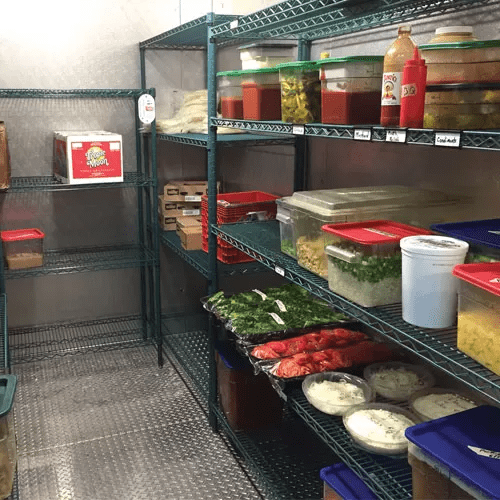With food costs continuing to skyrocket around the globe, attention to food waste is of paramount importance for restaurant and commercial kitchen managers. While loss of perishable goods will never be avoidable, SPECS has some handy tips from a refrigeration perspective that can help cut down on the amount of food making it into the dumpster.
First, prioritize air circulation. By packing your walk-in unit full of product, you can actually be restricting the airflow to your fresh product, allowing bacteria and mold growth to increase and causing added stress to your equipment. When a walk-in cooler cannot circulate air properly, the unit works harder to do so, leading to early parts failure and higher energy consumption. The best practice is to leave at least 3” of space between food containers, and 6” of space above the floor and below the ceiling. Additionally, having too much product or adding hot product to your unit will also decrease air circulation and make your equipment work harder to maintain temperature.
Next, keep your eye on the temperature. It’s important to set the temperature in your unit correctly to make sure your ingredients are being stored at optimal temperature, but it’s even more important to ensure that the equipment maintains that temperature. Walk-in units can fluctuate between 3°-5° depending on defrost times, however any more than this may be cause for concern and a sure-fire way to lose perishable product to bacteria growth or freezing. Another good practice is to periodically test the temperature of the unit, to ensure your unit’s thermometer is reading accurately. By taking the temperature of your walk-in with another calibrated temperature gauge, you’ll have the peace of mind to know that the number on the display is accurate.
You should also organize for efficiency. Keeping your walk-in organized is one of the easiest ways to avoid food waste from both contamination and temperature damage. Coolers usually have sections that are colder than others, and it’s a good idea to get to know these spots. Raw meats and fish are best stored on the bottom racks, as this tends to be the coldest area of the cooler. Keeping fresh fruits and vegetables in closed food storage containers helps to avoid cross-contamination as well as reduces the amount of acidity in the air, preventing oxidation in the metal panels and evaporators of the walk-in.
Finally, avoid refrigerator downtimes by keeping equipment operational. Preventative maintenance is an area that SPECS specializes in. Keeping condenser coils clean, doors sealing properly, and drain lines clear are all part of avoiding larger parts failures and downtimes due to equipment breakdown. SPECS offers monthly, quarterly, or bi-annual preventative maintenance plans that ensure your equipment is operating at its most efficient. This includes all refrigeration equipment on site including reach-in coolers/freezers, ice machines, and prep tables. When parts inevitably fail, our technicians will be there to make repairs in a timely fashion, keeping lead times down and getting your unit up and running ASAP.
Call SPECS today for more information or for quick and effective service on your walk-in cooler


Recent Comments